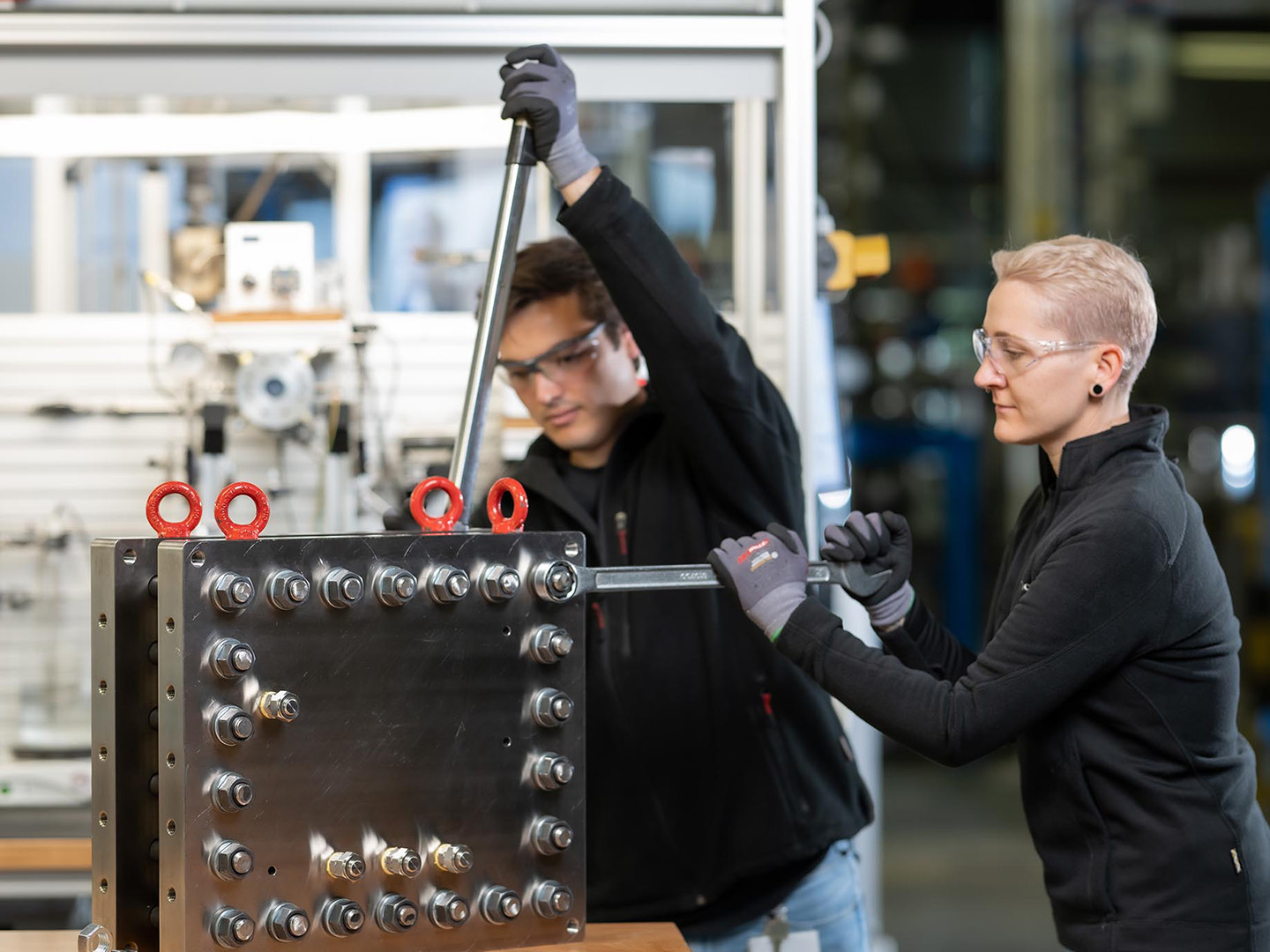CO2 electrolysis
Fraunhofer UMSICHT is working with the H2 Reallabor Burghausen
How can the chemical industry successfully transform itself into a sustainable industry? One answer is: by using hydrogen. Work is being done on appropriate solutions in the project “H2-Reallabor Burghausen – ChemDelta Bavaria”. Since July 2024, Fraunhofer UMSICHT has been supporting the subproject “CO2 Direct Electrolysis to Green Ethylene (CODE)”, which is based there. Specifically, the scientists are developing a novel reactor for the efficient conversion of carbon dioxide to ethylene.

“Due to its versatility, ethylene is an indispensable building block in the chemical industry,” says Dr. Kai junge Puring, explaining the importance of the chemical. ”It serves as a starting material for the production of numerous other chemicals and plastics – including polyethylene, one of the most frequently produced plastics worldwide, and ethylene oxide, which in turn serves as a basis for antifreeze and polyester.” The problem: At present, ethylene is usually produced from fossil crude oil.
Currently, the direct electrolysis of CO2 and hydrogen to form ethylene is not very efficient
Direct electrolysis of CO2 and hydrogen to produce ethylene is an alternative and sustainable process route. However, its efficiency is currently not so good, explains Kai junge Puring: “In the laboratory, the ethylene yield is currently 60 percent, and within a few hours the system breaks down and only produces hydrogen. In addition, the cell voltage is too high for energy-efficient and cost-effective operation under real-world conditions.” Other challenges include the formation of by-products such as hydrogen, formic acid and CO, the limited solubility of CO2 in water, and problems with the proton and anion exchange membrane.
Increasing the efficiency of the direct electrolysis of CO2 and hydrogen to ethylene to enable industrial application is one of the goals of the H2 real-world laboratory in Burghausen. Kai junge Puring: “We are aiming at the interpretation, design, manufacturing and testing of an electrolysis stack that produces ethylene at a rate of a few kilograms per day.” One focus of the researchers at Fraunhofer UMSICHT is on developing an efficient cell design for the demonstrator and scaling the project partners' electrode concepts. This builds on the experience gained in scaling CO2 electrolysis technology with membrane electrode assemblies for the production of green carbon monoxide.
H2-Reallabor managing director and overall project manager Dr. Christian Hackl is pleased that Fraunhofer UMSICHT is now a very competent new partner in the consortium: “With the department headed by Prof. Ulf-Peter Apfel, an ideal new project partner has been found that has been working for several years on the sustainable conversion and storage of electrical energy – in particular in the form of CO2-to-CO electrolysis – and the production of novel catalytic materials, including pilot plants.”
Background
In the sub-project “CO2 direct electrolysis to green ethylene (CODE)” of the project “H2-Reallabor Burghausen – ChemDelta Bavaria”, Fraunhofer UMSICHT is working with a consortium consisting of Rohrdorfer, WACKER, ESy-Labs, Westlake Vinnolit, TH Rosenheim, TU Munich, University of Stuttgart and Scheuch. A total of 35 partners from science and industry have joined forces in the real-world laboratory for four years. The project is funded by the German Federal Ministry of Education and Research with over 40 million euros. It is located in the ChemDelta Bavaria region in southeastern Upper Bavaria, which is home to around 25 companies in the chemical industry and more than 20,000 employees.
Last modified:
 Fraunhofer Institute for Environmental, Safety and Energy Technology UMSICHT
Fraunhofer Institute for Environmental, Safety and Energy Technology UMSICHT